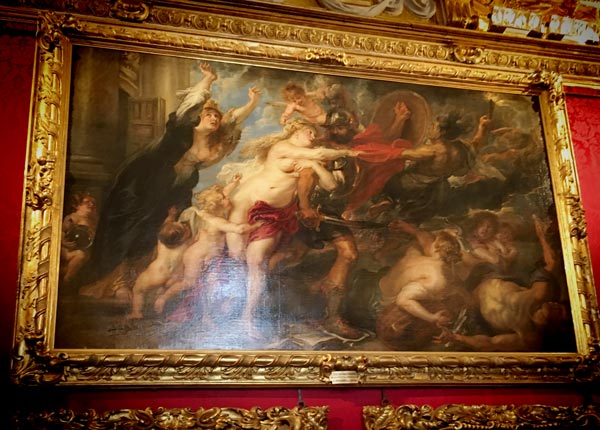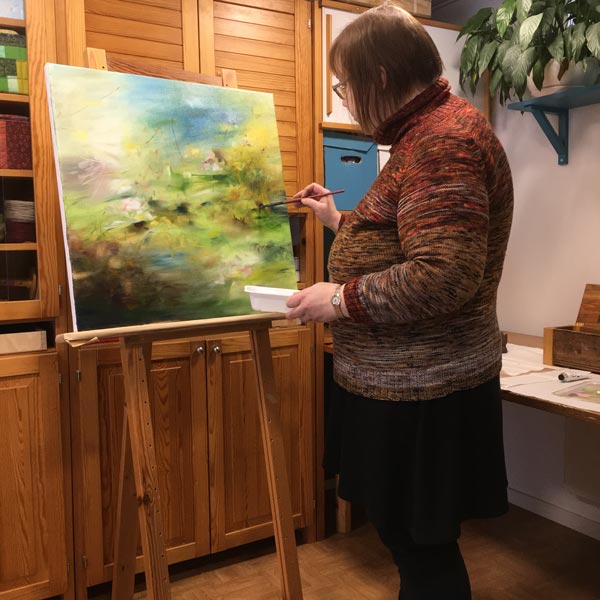Learning from Artistic Influences – Answering a Question
This week, I have a letter for you who want more from your art. Success looks different in different stages, but wherever you are in the artist’s journey, intuition says that moving forward will be tedious. So, it’s tempting to find a shortcut.

Last week, I got a message from a reader asking if I could recommend one or two artists that have influenced your work. “Who, in your opinion, is someone a new artist must learn about?” she wrote.
Here’s my answer to the message with some additional explanations and images.
Listing Artistic Influences
There are a lot of things that have influenced my work, starting from the slow and long summer days as a child in Nothern Karelia, browsing art history books in a local library, studying computer engineering and learning conceptual thinking, studying industrial design and learning the basics of visual communication through shapes, reading Paul Klee’s Pedagogical Sketchbook, learning old master techniques first in a couple of courses, then on my own, etc.
Two artists that I have admired in the past few years have been Peter Paul Rubens, a Baroque painter, and Wassily Kandinsky, an abstract art pioneer.
(These artists have inspired me to teach as well. In the last section of Floral Fantasies, you learn old master’s techniques, and in Floral Freedom, you learn abstract art through Kandinsky’s and Klee’s ideas.)

Read more about my visit to Palazzo Pitti in 2017!
However, these may not be the answers you want to hear. The answer that is most beneficial for you is to ask yourself what’s the root reason for the question.
Questioning Your Direction
When I was searching for an answer to that question about ten years ago, I wanted to find a direction that would take me to the art world. I knew my skills weren’t spectacular, so I wanted to find someone successful who creates art that is simple enough. But then I realized that my taste was a way further, and the only admiration I had for those artists was in their courage to come up and the success as far as I was then able to define it.

I believe in intuition, and based on that, I assume that you are at the intersection, wondering whether to start going further forward: becoming braver to share your work, build stronger technical skills, and move to the next level in what influences your art and how.
In the next level, the answers become more complicated and multi-faceted. You should learn more about art history and all kinds of contemporary art, go to art museums and galleries, and stop to think not only on the level of “I like that red” but on a more conceptual level: “what does that red represent and how could that effect be created in other ways too?”
Expanding Knowledge and Inspiration for Art
As an artist, you belong to the chain of creative generations, and your roots are long and broad.

You might also be in a spot where you need to start looking for inspiration outside art, expand into designing, illustration, architecture, and further: nature, culture, and whatever fields are close to you. Art happens when things collide. The nature of art is to expand, not narrow down.
My letter ends here, but how would you have answered the question? Leave a comment!
4 thoughts on “Learning from Artistic Influences – Answering a Question”
Comments are closed.
Ideas have collided recently for me ! I follow a “writer that draws”, he fills his head and eyes every day all day long . He writes in multiple notebooks and on devices and makes some art. Sometimes two things in a pile of papers collide! For me recently a movie and words from an art blogger melded into an answer for old plan that was on hold. Now to process and not lose it…
Sounds both interesting and fun! I also like to write, single words even. “King fisher” is a word that really appeals to me now, and I like to ponder about it.
It has taken me a while to respond because I’ve been thinking about this so much. It’s important to soak up beauty, styles, techniques of other artists, whether old or new. And, of course, art history is fascinating, and a good companion to learning. But in the end, we do have to trust our individual intuition. I think we begin by trying what others have to offer, and as we progress, our inner stylist begins to awaken, to stir, to sing to us, and we very much want to do it our way. Teachers guide us, as you do, to listen to our own voice. Influence must be recognized and appreciated, but we also need to be aware of our ability to collide and then break away toward what is our own art.
Thanks so much, Cathy! I love your answer, so wisely put!